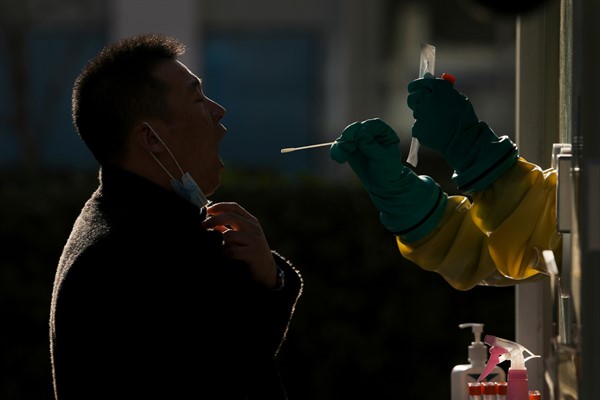Around the world, strict restrictions in response to the coronavirus pandemic—including lockdowns, curfews, lengthy isolation periods and quarantine—are giving way to community mitigation measures and, more broadly, a relaxed, more pragmatic approach. But in Hong Kong and China, where authorities continue to favor a more ironclad response, there remains no end in sight to a “zero-COVID” strategy, two years on from the onset of the pandemic.
China is now on high alert after detecting the first local outbreak of the omicron variant, weeks before the country is set to host the 2022 Winter Olympics in Beijing. The northern coastal city of Tianjin, which has a population of 14 million residents and borders Beijing, was placed under partial lockdown, with stringent exit controls, after two residents were found to be infected with the new variant last Saturday. Over the weekend, 40 more positive cases were reported amid a citywide testing scheme, although it has not been confirmed by health authorities if these cases all stem from the omicron variant.
The new variant, which is reported to be far more contagious than previous strains, is testing the limits of China’s zero-COVID approach. “Whether it is in terms of virus origin tracing or epidemiological investigations, the omicron variant has brought along unprecedentedly massive challenges and difficulties,” Zhang Yang, deputy director of Tianjin’s disease control center, admitted in an interview on state television Monday. The same day, the omicron variant had already slipped through the country’s tight controls on internal travel, making its way to the city of Anyang in Henan province and triggering yet another lockdown there. The new variant was also detected in Wuxi, a city in Jiangsu province.

